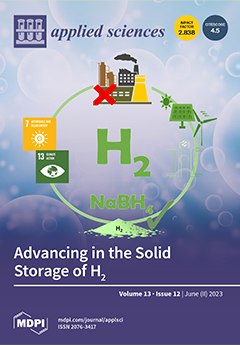This study used monoethanolamine (MEA) as an amine-based solvent, which was blended with secondary amines (DIPA), tertiary amines, stereo amines, and piperazine (PZ) to prepare mixed amines at the required concentrations, which were used as the test solvents. To search for the best-mixed
[...] Read more.
This study used monoethanolamine (MEA) as an amine-based solvent, which was blended with secondary amines (DIPA), tertiary amines, stereo amines, and piperazine (PZ) to prepare mixed amines at the required concentrations, which were used as the test solvents. To search for the best-mixed amines, a continuous bubble-column scrubber was adopted to explore the performance of mixed solvents presented in this study. The solvent regeneration test was also carried out at different temperatures. The selected factors included the type of mixed amine (A), the ratio of mixed amines (B), the liquid feed flow (C), the gas flow rate (D), the concentration of mixed amines (E), and the liquid temperature (F), each having five levels. Using the Taguchi experimental design, the conventional experimental number could be reduced from 15,625 to 25, saving much time and cost. The absorption efficiency (E
F), absorption rate (R
A), overall mass-transfer coefficient (
KGa), and absorption factor (ϕ) were estimated as the indicators. After the Taguchi analysis, E, D, and C were found to play important roles in the capture of CO
2 gas. Verifications of optimum conditions were found to be 100%, 19.96 × 10
−4 mole/s·L, 1.2312 1/s, and 0.6891 mol-CO
2/L·mol-solvent for E
F,
RA, KGa, and ϕ, respectively. The evaluated indexes suggested that MEA + PZ was the best-mixed amine, followed by MEA and MEA + DIPA. The solvent regeneration tests for the scrubbed solutions performed at different optimum conditions showed that the heat of the regeneration sequence was in the order of MEA > MEA + PZ > MEA + DIPA with minimum energy required at 110 °C. The individual energy required was also analyzed here.
Full article





